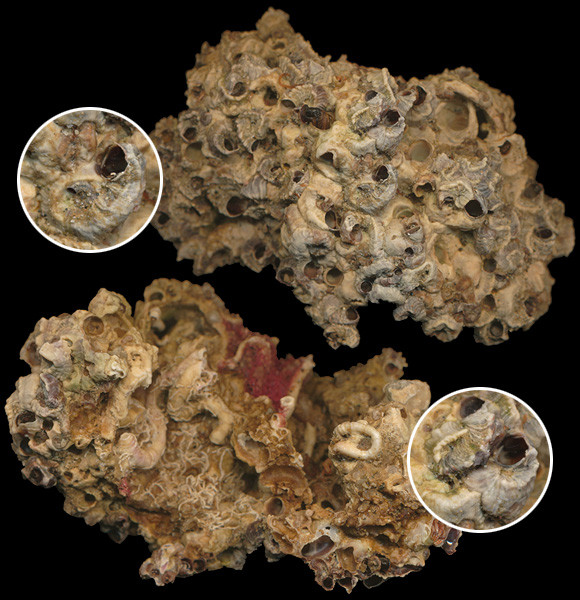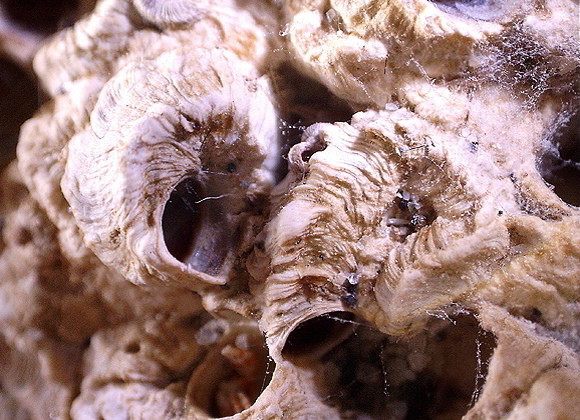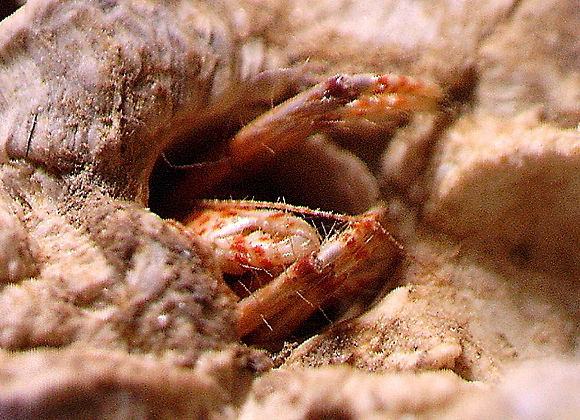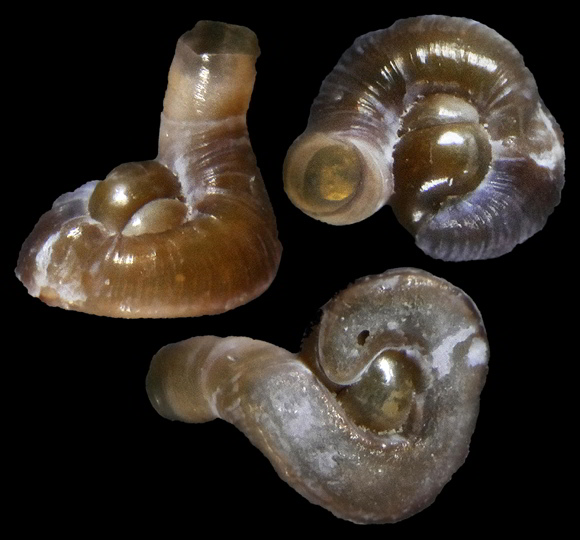
Corsica, Sardinia, Sicily, Tyrrhenian Sea, Malta, and maybe far eastern Mediterranean. This is a reef-building species in the mediolittoral and shallow infralittoral. Like its sister-species D. ebeche from Alborán Sea and S. Spain, it forms crusts, with a thickness up to 4cm, cornices and corbellings in association with calcareous algae (DORIS). Suspension feeder.
Protonym: Vermetus cristatus.
Synonyms: panormitanus, petraeum.
Fragment of colony collected at 1m deep, Tropea, Vibo Valentia, Calabria, SW. Italy. 8-10mm.

« The main characteristic of the species is the presence of a ridge along the dorsum, and to be very wrinkled with closely spaced and clasped lamelliform folds, produced by the growth of the shell; what demonstrates clearly that its constant shape is a kind of funnel is that the mollusc, as it gradually grows, overlaps one fold on the other. » – S. Biondi Giunti: “Descrizione di alcune specie malacologiche nuove che vivono nel nostro litorale” Atti dell’Accademia Gioenia di Scienze Naturali in Catania ser.2:vol.14, Catania 1857, p.120.
The absence of a pelagic larval stage can explain why youngsters fix chiefly on adults in the immediate vicinity. In fact, the reef-building behaviour is sustained by this absence of free-swimming stage, added to a manifest preference for attaching to organic hard substrates (La Marca & al., 2016).
The absence of a pelagic larval stage can explain why youngsters fix chiefly on adults in the immediate vicinity. In fact, the reef-building behaviour is sustained by this absence of free-swimming stage, added to a manifest preference for attaching to organic hard substrates (La Marca & al., 2016).

Detail of the detail: a tube-dwelling hermit-crab, Calcinus tubularis (Linnaeus, 1767). Like the western Atlantic Calcinus verrillii (Rathbun, 1901) from Bermuda, tubularis is well known for its ability to inhabit gastropod tubes and shells: the males occupying loose shells, the females prefering attached tubes, even though they are larger than males.

« The nuclear shell is minute, rissoid, brown, of two and a half whorls, longitudinally flexuously regularly striate: it settles mouth down, and then the adult shell of stronger texture encircles the nucleus, forming strong ridges above… » – T. Iredale: “The Middleton and Elizabeth Reefs”, The Australian zoologist vol.VIII, Sydney 1937, p.254. – Above: embryonal shell still visible on this juvenile from La Franqui, Leucate, Occitania, S. France. 1,4mm. Original pictures provided by S. Clanzig (FR) – (CC BY-NC-SA).